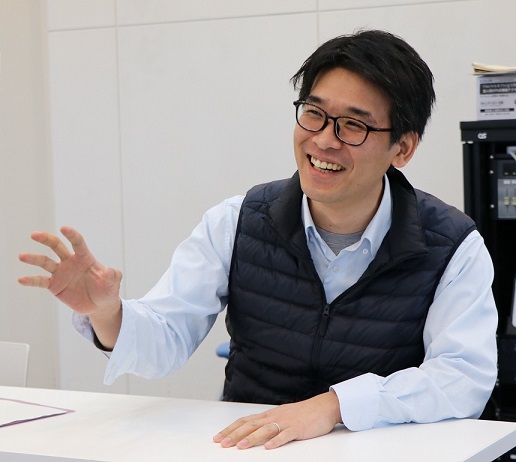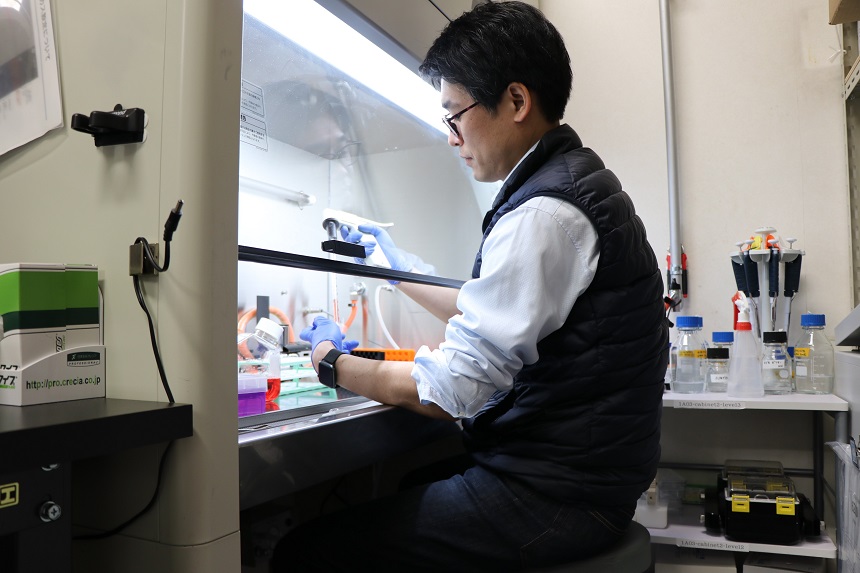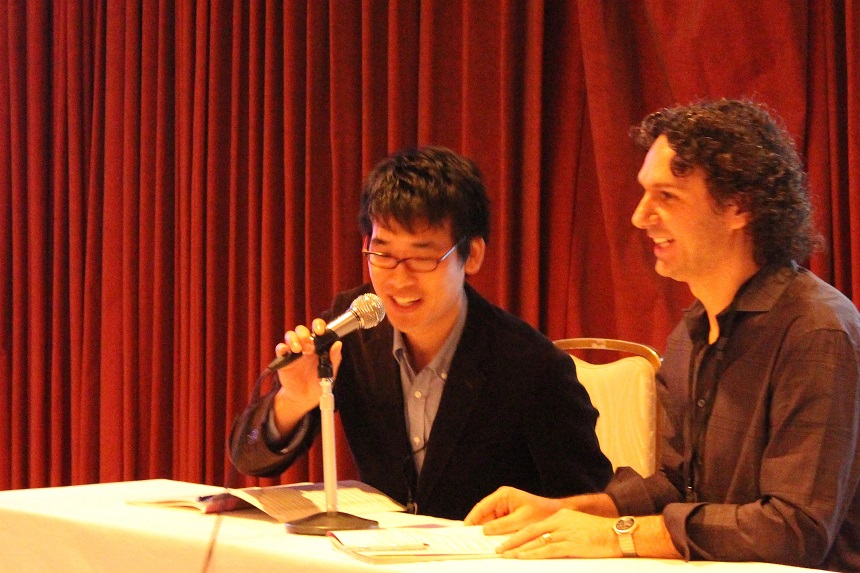On February 1, 2013, Hiroshima University established two new programs: the “Distinguished Professors” (DP) program and the “Distinguished Researchers” (DR) program. Individuals who are part of these programs are recognized as senior and junior faculty members respectively, who are engaged in extraordinarily distinguished research activities.
A Conversation with Distinguished Researcher Dr. Hiroshi Ochiai

Can you please introduce yourself? How did you get interested in this field?
I am Hiroshi Ochiai, an Associate Professor at the Graduate School of Integrated Sciences for Life, Hiroshima University. My research focuses on the mechanisms of gene expression regulation.
During my doctoral course, I developed genome editing technologies to elucidate the mechanisms that regulate the expression of specific genes responsible for the early development of sea urchins. Since then, I have been interested in understanding the regulatory mechanisms behind how specific genes can be expressed.
Learning biophysics during this time provided me with the necessary knowledge and insight to develop more quantitative research. I also learnt that gene expression levels differ among individual cells, owing to stochasticity in chemical reactions, which got me interested in understanding how cells cope with and sometimes exploit such inter-cellular heterogeneity in gene expression.
After becoming a principal investigator at Hiroshima University, I have been studying the mechanisms of gene expression regulation in mouse embryonic stem cells using a combination of genome editing technology, live imaging and mathematical analysis.
Do you think that an interdisciplinary approach of using your biophysics and mathematics background is an advantage for conducting research in the field of biology?
I think interdisciplinary research is very important. In my field, the main focus is on observing and semi-quantitatively studying cellular phenotypes caused by perturbations in gene function. Using math and physics has broadened the scope of my research, whereby I am able to analyze results more quantitatively. This is quite a unique take on research in the field of gene expression and regulation.

Can you introduce us to your research field?
During early mammalian development, cells known as the inner cell mass arise. In the inner cell mass cells, the expression level of the transcription factor NANOG is heterogeneous among cells. NANOG is important for pluripotency, and its expression level is important for determining subsequent cell fate. However, the mechanisms underlying the appearance of intercellular heterogeneity in gene expression levels in the inner cell mass are not well understood.
We discovered that the transcription of the Nanog gene in mouse embryonic stem cells derived from the inner cell mass exhibits a transcriptional pattern known as “transcriptional bursting,” which is involved in the inter cellular heterogeneity which regulates the gene expression levels of Nanog. I have been studying the mechanisms by which transcriptional bursting is regulated, and its contribution to the heterogeneity in gene expression levels.

"Transcription" of genes gives rise to mRNAs which then get translated into proteins integral for living organisms. This "transcription" happens in bursts and exploring the factors controlling this transcriptional bursting is the main research venture for Dr. Ochiai's lab.
Source: https://home.hiroshima-u.ac.jp/ochiai/en/transcriptional-bursting/
mRNAs transcribed from genes are translated into proteins, which perform biological functions. The regulatory mechanisms of transcriptional bursting are poorly understood, and research suggests that dynamic interactions between gene promotors and distal enhancers, along with the formation of clusters of transcription-related factors in the vicinity of genes is associated with transcriptional bursting. I am interested in investigating the possibility that both these mechanisms are involved in transcriptional bursting of the Nanog gene in mouse embryonic stem cells.
What are some of the major projects that you are working on right now?
My group has recently developed a technology that allows us to visualize the nuclear positions of specific genes and their transcriptional activities with high accuracy. Using this technology, we have been able to identify several new phenomena, such as the formation of clusters of specific transcription-related factors in the vicinity of Nanog in the ON state, or the formation of clusters of other factors near Nanog, regardless of the transcriptional state of the gene.
What are some of the key practical applications of your research? What will be the impact of your research on the society?
Our research can greatly contribute to regenerative medicine. Embryonic stem cells and induced pluripotent cells can be induced to differentiate into a variety of cell types. For them to be used in regenerative medicine, it is crucial to efficiently induce the differentiation of pluripotent stem cells into desired cell types. However, inducing the homogenous differentiation of pluripotent stem cells into a specific cell type is difficult because of their intercellular heterogeneity, owing to transcriptional bursting and other factors. Our research findings may lead to the establishment of an efficient method to induce differentiation of pluripotent stem cells into characteristic cell types, by controlling transcriptional bursting.
What are some of the challenges in your field?
Currently, it is difficult to accurately know the intricate structural changes that individual molecules inside a cell undergo in real time. Current methods are not sufficient to provide information on the type of structural changes in a molecule that occurred previously and will occur subsequently. Although techniques like fluorescence microscopy help determine the subcellular localization of molecules in living cells, it still does not have the capability to capture miniscule structural changes or examine multiple proteins simultaneously.
Currently, research relies on the data obtained from multiple technologies including microscopy. In order to conduct high-level research, it is important to get familiarized with a wide range of molecular biology techniques and information gathering. Personally, I find this to be quite challenging but know that it will be very rewarding in the long run.
What are some things about your research that you are proud of?
Recently, I presented our latest research results at an international conference, which were recognized and praised by a prominent researcher in the field. It was a proud moment to realize that our research is being accepted well in the community.

What new research theme are you interested in exploring in the future?
Currently, we are trying to understand the regulatory mechanisms of transcriptional bursting using mouse embryonic stem cells, since they are experimentally easier to handle. However, there is limited information on the regulation of transcriptional bursting in living animals. We would like to clarify whether transcriptional bursts are observed in living mice as well, and whether they are involved in cell-to-cell heterogeneity in gene expression and cell fate determination. We also want to understand whether cell fate can be monitored by artificially controlling transcriptional bursts. I am also interested in investigating the formation of organoids, which is a critical step for the development of applications in regenerative medicine.
How can you define your lifelong/career-long research theme?
My lifelong research theme is to elucidate the mechanisms of gene expression regulation at the molecular level, in real-time. I would like to contribute to the elucidation of gene expression regulation mechanism, while contributing to the development of technologies that help to understand this complex mechanism.

 Home
Home